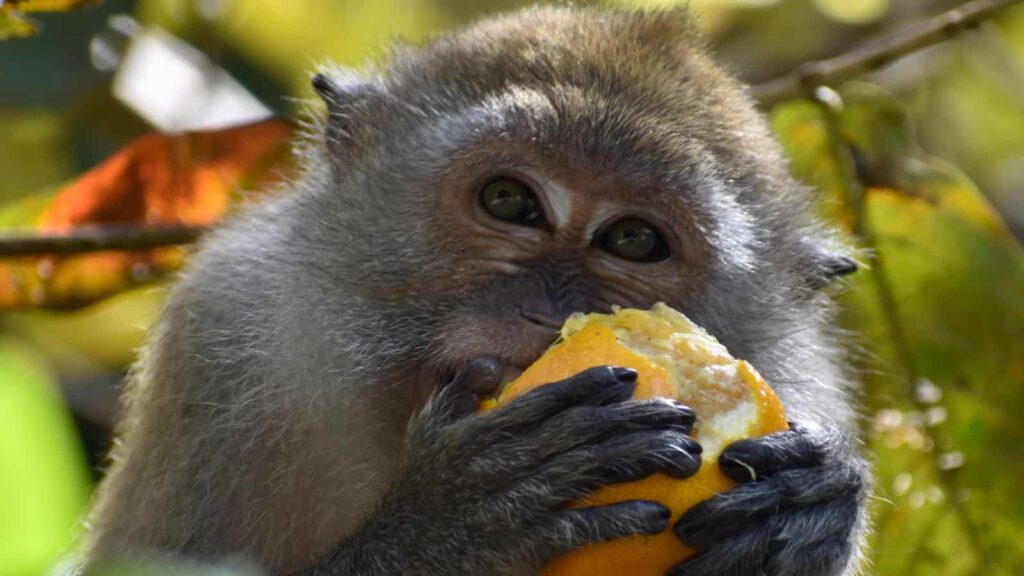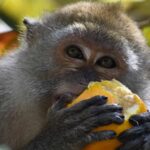Monkeys are loved around the world, and it’s easy to see why they’re so popular. They’re similar enough to humans to have some recognizable traits while still showing off some interesting—and unusual—quirks of their own. Here are 19 facts about monkeys that we’re sure you’ll find fascinating.
There Are Old World and New World Monkeys
According to Brittanica, monkeys are divided into two categories based on their origin. Old-world monkeys come from Africa and Asia, while New-world monkeys are found in South and Central America. There used to be many Old-world monkeys in Europe, too, but most have died out.
Monkeying Around
While humans can also have a good time chasing each other around and play-fighting, they’re less likely to enjoy the most popular monkey activity: grooming. Monkeys can’t get enough of picking fleas out of each other’s fur. Different strokes for different folks (and monkeys)!
Too Many Bananas Can Be Dangerous
Everybody knows that monkeys love bananas, but did you know that eating too many can lead to health problems for them? Banana addiction can result in tooth decay, weight gain, and even diabetes—that’s why some zoos are putting their monkeys on a strict no-nana diet.
Monkeys Have Tails Unlike Apes
If you’re struggling to tell the difference between a monkey and an ape, there’s a (nearly) foolproof method to find the answer. All monkeys, except for the Barbary macaque, have tails. On the other hand, apes, including gorillas, don’t have tails, so be sure to look for this body part if you’re ever confused.
They Can Ferment Things In Their Stomachs
You’ve heard of microbreweries, but would you trust something that’s been fermented inside a monkey’s stomach? Colobus monkeys and langurs have bacteria in their stomachs that ferment the leaves on which they snack. This helps with their digestion.
There Are Hundreds of Species
Monkeys aren’t just one species of animal—in fact, Monkey Worlds mentions that there are over 250 different types around the world, with more being discovered constantly. For instance, the lesula monkey was mostly unknown until scientists found it in the Congo in 2007, while the popa langur was discovered in Myanmar in 2020.
They’re Problem Solvers
Monkeys might not look super smart, but they’re actually surprisingly intelligent. Some studies even suggest that they’re capable of making mental maps to help navigate the jungle. Monkeys can also use their brains—and tools—to solve head-scratching problems. In fact, research shows that they’re just as capable of being thoughtful as humans!
They Eat a Plant-Based Food
Most monkeys eat a plant-based diet consisting of fruits, nuts, roots, and seeds, although some species eat meat when they can get it. If you’re wondering which species to hire to keep your lawn in check, then the gelada monkey is a good fit, as these Ethiopian monkeys love to snack on grass.
They’re Threatened by Humans
It’s not easy being a monkey. New World monkeys have to deal with the effects of deforestation, while monkeys all over have to be careful to avoid human hunters. Hunters target monkeys to keep populations under control and to collect their skin and fur.
They’ve Been the Pets of High Society
Monkeys thrive in the wild, but this doesn’t mean that they’re not equally suited to high society. A mandrill monkey named Happy Jerry was adopted into British society in the 1800s, where he drank alcohol, smoked tobacco, and even had dinner with the Royal Family.
They Can Be Extremely Noisy
If your neighbors are bad at keeping quiet, you can take comfort in the fact that things could always be worse. Howler monkeys, which are found in South and Central America, are so loud that their cries can be heard for up to three miles. Your neighbors don’t seem so bad in comparison!
Some Species Are Nocturnal
Owl monkeys can see at night thanks to their large eyes, which allows them to live nocturnally. The jungles of South and Central America don’t fall silent after dark, as owl monkeys grunt at night to communicate with one another. We hope the other animals have their earbuds on hand.
Some Can Store Food in Their Cheeks
Some monkeys from the Old World don’t have to worry if they’re disturbed before they’ve finished their food. San Diego Zoo reveals that these monkeys can store their leftovers in special cheek pouches. If they feel peckish later in the day, they’ve got a ready-to-chew snack ready and waiting.
They Have Finger Prints Like Humans
Criminal monkeys better watch out—there’s a reliable way to catch monkey thieves! Just like humans, monkeys have unique fingerprints. In fact, the similarities between monkey and human fingers are often cited as evidence of our distant relationship; we’re just too alike for it to be a coincidence.
They Can Be Speedy
Some species of monkeys are impressively speedy. The Patas monkey, which can be found in East and West Africa, is particularly fast. This Old World monkey is capable of reaching 35 mph while running along the ground—that’s much faster than even the best Olympic athletes.
They Love a Hot Bath
Humans aren’t the only animals that enjoy a soak in the tub after a long, hard day. One group of Japanese macaques loves to take a dip in the hot springs found in Jigokudani Monkey Park. It’s thought that they learned the behavior from the tourists visiting the region’s natural saunas.
Some Species Have a Handy Tail
Nearly every monkey is born with a tail, but some monkey tails are more useful than others. Wooly monkeys and spider monkeys are examples of those with prehensile tails—these tails act like extra hands and can be used to grab trees or pick up objects.
Some New World Monkeys Are Tiny
The New World is home to the two smallest species of monkeys: the East and West pygmy marmosets. The adults weigh about 100 g each. However, their tiny size doesn’t stop them from getting around, as they can jump several meters between branches without any trouble.
Their Fur Can Change Color From Baby To Adult
Monkeys come in all shapes, sizes, and colors. In fact, baby monkeys sometimes look completely different from their parents—as the Borneo Nature Foundation explains, red langur monkeys are white when they’re born. It’s thought that young langurs’ white fur helps to remind adults that they need looking after—not that they need a paternity test!







